Ljubljana related
Časoris is an online newspaper aimed at children. Each week we’ll take an article and post it here as a Slovene-English dual text.
V Plečnikovem letu se spominjamo njegove izjemne arhitekture
In Plečnik's year we remember his exceptional architecture
Written by Sandra Hanžič, translated by JL Flanner & G Translate
Letošnje leto bodo zaznamovali različni dogodki in obletnice. To bo med drugim olimpijsko leto, leto evropske mladine, doma pa tudi Tartinijevo in Plečnikovo leto.
This year will be marked by various events and anniversaries. This will be, among other things, the Olympic Year, the Year of European Youth, and the Tartini and Plečnik Years at home.
Vlada ga je razglasila, ker praznujemo 150-letnico rojstva arhitekta Jožeta Plečnika.
The government has announced it because we are celebrating the 150th anniversary of the birth of the architect Jože Plečnik.
Živel je v Ljubljani, a njegove zgradbe najdemo po vsej Sloveniji.
He lived in Ljubljana, but his buildings can be found all over Slovenia.
Ustvarjal je še na Dunaju in v Pragi, kjer je študiral, delal in poučeval.
He also created in Vienna and Prague, where he studied, worked and taught.
Njegovih del takrat niso razumeli, očitali so mu celo, da je staromoden. Navdih zanje je namreč iskal v antiki pri Grkih in Rimljanih.
His works were not understood at the time, he was even accused of being old-fashioned. He sought inspiration for them in antiquity, from the Greeks and Romans.
Elemente, značilne za ta čas – stebre, piramide, krogle, loke –, lahko opazimo v skoraj vseh njegovih delih.
Elements characteristic of this time - pillars, pyramids, spheres, arches - can be seen in almost all his works.
Danes vemo, da je bil kreativen, inovativen in napreden za svoj čas, pravijo Tina Silič, Barbara Viki Šubic in Tina Gradišer s Centra arhitekture Slovenije.
Today we know that he was creative, innovative and progressive for his time, say Tina Silič, Barbara Viki Šubic and Tina Gradišer from the Centre of Slovenian Architecture.
Arhitekturo je ustvarjal za ljudi. Postavljal jih je v ospredje javnega življenja, umeščal je naravo po mestu, s svojimi deli je krepil skupnost, zavzemal se je za ugodno bivalno okolje ter ustvarjal mesto po meri pešca.
He created architecture for people. He placed them at the forefront of public life, placed nature around the city, strengthened the community with his works, advocated a favourable living environment and created a city tailored to pedestrians.
Njegova arhitektura je bila trajnostna. Uporabljal je lokalne materiale ter recikliral gradbene elemente. Ali veš, da je za stebre cerkve Sv. Mihaela uporabil kar kanalizacijske cevi?
His architecture was sustainable. He used local materials and recycled building elements. Did you know that for the pillars of the church of St. Michael's Church [Cerkev sv. Mihaela na Barju] used sewer pipes?
Zveni znano? Z vsemi temi vprašanji se arhitekti ukvarjajo še danes.
Sounds familiar? Architects still deal with all these issues today.
Vedno bolj se zavedajo blagodejnega vpliva narave, dreves, potreb po ugodnem življenjskem prostoru za vse prebivalce in problemov, ki jih v mesta prinaša promet, navajajo sogovornice.
They are becoming more and more aware of the beneficial effects of nature, trees, the need for a favourable living space for all residents and the problems that traffic brings to cities.
V Ljubljani bodo kmalu prenovili njegovo trafiko. Banka Slovenije bo izdala njegove spominske kovance, v teh dneh pa bo izšel ponatis njegovega stripa.
His trafika [newsstand] will soon be renovated in Ljubljana. The Bank of Slovenia will issue his commemorative coins, and a reprint of a graphic novel about him will also be published soon.
Izjemnost njegove arhitekture se kaže tudi z vpisom njegovih del med Unescovo svetovno kulturno dediščino.
The exceptionality of his architecture is also shown by the inscription of his works among the UNESCO World Heritage Sites.
Read more stories and improve your Slovene at Časoris, while all our dual texts can be found here.
STA, 12 January 2022 - The municipality of Ljubljana has announced a public call for the reconstruction of the Plečnik Auditorium, the former open-air amphitheatre in a clearing behind Tivoli Mansion in Ljubljana's Tivoli Park. It was designed by architect Jože Plečnik (1872-1957) and constructed in 1933, but left to decay after the Second World War.
In Plečnik's design, a wooden grandstand was placed to the west of the clearing behind Tivoli Mansion, where the terrain naturally rises, while a gravel stage overlooked Ljubljana. Above the wooden stands stood a fountain, which was later moved to a different location, next to the Ljubljanica River.
After the Second World War, the amphitheatre was left to decay. Until the mid-1960s, the area was used to host an open-air summer cinema, which was subsequently abandoned and the site was overgrown. The clearing is now surrounded by tall trees and is a protected plant habitat.
However, when the Švicarija arts centre in Tivoli was renovated a few years ago, the idea of reviving the amphitheatre was born as well. According to the plans drawn up by the architectural firm Medprostor, the wooden grandstand will be rebuilt on a steel structure, to its former extent and in its former location, with the trees and vegetation adjacent to the clearing to be fully preserved.
The stage of the reconstructed open-air theatre will be covered with grass, and the whole area will be linked with the Švicarija arts centre and Tivoli Mansion, the newspaper Dnevnik has reported.
"When planning the reconstruction, we felt it was important not to introduce new original elements, but simply to bring in modernity and also to be true to the original," said Rok Žnidaršič, the architectural project manager from Medprostor.
According to Dnevnik, Žnidaršič added that although the project followed the form and concept of Plečnik's design, it is not a "replica of the lost architectural spatial development, but rather an interpretation of it."
You can see the details of the public tender (in Slovene) here
Časoris is an online newspaper aimed at children. Each week we’ll take an article and post it here as a Slovene-English dual text.
Plečnikova dela uvrščena na Unescov seznam svetovne dediščine
Plečnik's works are on the UNESCO World Heritage List
Written by Dora Adamič, translated by JL Flanner & G Translate
Na Unescovem seznamu svetovne dediščine lahko po novem najdemo tudi arhitekta Jožeta Plečnika. O enem izmed naših najpomembnejših arhitektov smo se pogovarjali z arhitektom in urednikom revije Outsider Matevžem Grando.
Architect Jože Plečnik can now be found on the UNESCO World Heritage List. We talked about one of our most important architects with the architect and editor of Outsider magazine Matevž Grando.
Zakaj je bil Plečnik šele zdaj uvrščen na Unescov seznam svetovne dediščine?
Uvrščanje svetovne dediščine na Unescov seznam je dolgotrajen postopek. Predlagatelji morajo pripraviti dobro obrazložen predlog, zakaj bi bilo nekaj primerno uvrstiti nanj. Potem pa mednarodna komisija vlogo dlje časa preučuje, saj mora pri tem slediti strogim kriterijem in si vse predloge ogledati v živo.
Why was Plečnik only now included in the UNESCO World Heritage List?
The inclusion of a UNESCO World Heritage Site is a lengthy process. Proposers should make a well-reasoned proposal as to why it would be appropriate to include something on it. After that, the international commission examines the application for a longer period of time, as it has to follow strict criteria and see all the proposals in person.
Pri odločanju ni pomembno samo stanje objektov, ampak tudi odnos skupnosti do njih. Zato na seznamu ni Bežigrajskega stadiona, ki je v zelo slabem stanju.
When deciding, it is not only the condition of the facilities that is important, but also the attitude of the community towards them. Therefore, the Bežigrad Stadium, which is in very poor condition, is not on the list.
Čeprav je uvrstitev njegovih del na Unescov seznam trajala dolgo, je prišla ob zelo pravem času. Točno pred stotimi leti je bilo namreč za Plečnika prelomno leto, saj je začel poučevati arhitekturo v Ljubljani in graditi to, kar danes imenujemo Plečnikova Ljubljana.
Although the inclusion of his works on the UNESCO list took a long time, it came at a very opportune time. Exactly one hundred years ago was a turning point for Plečnik, as he began teaching architecture in Ljubljana and building what we now call Plečnik's Ljubljana.
Zakaj veliko Plečnikovih idej ni bilo uresničenih?
V ustvarjalnih poklicih je to normalno. Veliko idej in zamisli, ki jih je imel Leonardo da Vinci, tudi nikoli ni bilo uresničenih.
Why were many of Plečnik's ideas not realized?
This is normal in creative professions. Many of the ideas and concepts that Leonardo da Vinci had were also never realized.
Veliki ustvarjalci stalno ustvarjajo. Zavedajo se, da bo uresničen le del njihovih zamisli, a to ni ovira, da ne bi ustvarjali naprej. Poleg tega je v arhitekturi za izgradnjo pomembnih več dejavnikov, na katere arhitekt nima vedno vpliva.
Great creators are constantly creating. They are aware that only some of their ideas will be realized, but this is not an obstacle to not creating further. In addition, several factors are important in architecture for construction that the architect does not always have an influence over.
Kakšni so bili njegovi načrti za tovarno čokolade na Dunaju?
V njegovi monografiji, ki je izšla leta 1920, so bila objavljena le njegova dunajska dela in neizvedeni projekti iz tistega časa, med njimi tudi tovarna čokolade. Zasnoval jo je kot mrežo ploskev, ki spominjajo na tablico čokolade. Takrat je bila pri načrtovanju tovarn zelo pomembna lepota. Tako je tudi Plečnikova tovarna čokolade prava estetska mojstrovina.
What were his plans for a chocolate factory in Vienna?
In his monograph, published in 1920, only his Viennese works and unfinished projects from that time were published, including a chocolate factory. He designed it as a grid of surfaces reminiscent of a bar of chocolate. At that time, beauty was very important in the design of factories. Thus, Plečnik's chocolate factory is a true aesthetic masterpiece.
Read more stories and improve your Slovene at Časoris, while all our dual texts can be found here.
STA, 28 July 2021 - Ljubljana's landmarks designed by architect Jože Plečnik (1872-1957), including the Triple Bridge, Congress Square and Žale Cemetery, have been included in UNESCO's World Heritage List in line with a decision adopted by the World Heritage Committee on Wednesday.
Slovenia submitted the bid in January 2020 after an earlier joint bid with the Czech Republic was abandoned. All of Plečnik's major works in Ljubljana are thus included in the world heritage list, except for the dilapidated Bežigrad Stadium.
The country's bid Ljubljana: The Timeless, Human Capital Designed by Jože Plečnik, covered the works that Slovenia's most acclaimed architect completed during both world wars.
The decision of the World Heritage Committee comes after the International Council on Monuments and Sites (ICOMOS) positively assessed Slovenia's bid on 4 June.
ICOMOS recognised Plečnik's works in Ljubljana as an exceptional example of urban space design in accordance with the architect's deeply human vision that transformed a former provincial town into a symbolic national capital.
According to ICOMOS, Plečnik's approach is based on the reformist architectural movements of the early 20th century that is currently under-represented in the World Heritage List.
Špela Spanžel from the Ministry of Culture, who headed the task force preparing the nomination, said that the process that had led to this recognition had gradually started ten years ago, initially as a reflection on the value of Plečnik's heritage.
"We believe that Plečnik's Ljubljana illustrates in an exemplary way an approach to heritage that honours the achievements of the past and conceives the future tailored to the people, which means it very much reflects modern notions such as quality architecture and built environment, management, sustainability, beauty and a sense of space," Spanžel said.
Slovenia's bid was prepared by a group of experts in protection, preservation and management of cultural heritage in cooperation with the owners and managers of Plečnik's landmarks. The process was led by the Ministry of Culture and coordinated by the Museum of Architecture and Design (MAO).
Slovenia already has four entries in the World Heritage List - heritage of mercury in Idrija, prehistoric pile dwellings around the Alps, and ancient and primeval beech forests, and the Škocjan Caves.
STA, 21 April 2019 - The Environment and Spatial Planning Ministry rejected at the end of March the BŠP company's request for a building permit to overhaul a rundown Ljubljana stadium designed by acclaimed architect Jože Plečnik. BŠP boss Joc Pečečnik says he will not give up on the project he launched in 2007 and will press charges.
The Bežigrad Stadium is protected as cultural heritage of national importance. Its construction started in the early 1920s, but was completed only in the late 1930s.
To save it from ruin, Ljubljana joined forces in November 2007 with businessman Pečečnik and the Slovenian Olympic Committee (OKS) to turn it into a sport park.
Following years of slow progress and setbacks, the Culture Ministry said in February the plans do not entail renovation and conservation of all elements of the stadium.
It also found problematic constructing a new multi-storey building housing a hotel, a sports clinic and department stores in the proximity of the monument.
As a result, the ministry and the Institute for the Protection of Cultural Heritage gave the plans a negative opinion, a basis for a decision on the building permit.
"We won't renounce the project in which we've put 14 years of effort, desires and money for the stadium to get finally renovated," Pečečnik told the press on Wednesday.
"To preserve its cultural heritage, we wanted to combine the old and the new in a symbiotic way as the only option to renovate Plečnik's stadium.
"The state gave up on this and many other cultural monuments a long time ago, leaving them to decay," he said at the news conference, held at the seat of BŠP.
Next week he intends to file criminal complaints and damages suits, and an appeal at the Administrative Court over the alleged interference in the building permit procedure.
He highlighted a suit against Culture Minister Vasko Simoniti and Jelka Pirkovič, acting head of the ministry's directorate for cultural heritage.
Shameful Condition of Plečnik's Stadium in Ljubljana: An Example of Poor Governance?
Both Pečečnik and OKS head Bogdan Gabrovec said that Prime Minister Janaz Janša had so far supported the BŠP project.
BŠP is owned by Pečečnik's company Elektronček (59%), the municipality of Ljubljana (28%), and the OKS (13%) as the owner of land.
Over EUR 12.4 million has already been invested in the project.
Both the OKS and Ljubljana remain BŠP's partners, with Gabrovec saying the OKS is hoping to get new premises for itself, various sport associations and a Slovenian Olympic Sport Centre.
STA, 16 March 2021 - The Institute for the Protection of Cultural Heritage opposes a project to revamp a rundown sports stadium in Ljubljana that was designed by Slovenia's best known architect Jože Plečnik. The decision was made last month after the Culture Ministry annulled a previous positive opinion, Dnevnik reports on Tuesday.
The Ministry of Environment and Spatial Planning told the newspaper that the Bežigrad Sports Park project (BŠP) planned by entrepreneur Joc Pečečnik had received a negative opinion from both the Institute for the Protection of Cultural Heritage and the Culture Ministry.

The stadium in better days. Wikipedia
Related: Shameful Condition of Plečnik's Stadium in Ljubljana: An Example of Poor Governance?
The ministry would not comment on how this will affect the process of issuing a construction permit.
The company in charge of the project, BŠP, filed a request for a construction permit in December 2018 and supplemented it in May 2019. The Institute for the Protection of Cultural Heritage gave its second consent at the end of last January.
The project had already had the institute's consent but had to obtain it again after a demand was filed for an integral construction permit under new legislation, which was to speed up the project.

Photo: Alja Mravljak

Photo: Alja Mravljak
However, the Culture Ministry, acting as a supervisor of the Institute for the Protection of Cultural Heritage, told the Environment Ministry last August that the BŠP project was not in line with a decree declaring Plečnik's works in Ljubljana national monuments.
The Environment Ministry replied it was obligated to take into account the institute's positive opinion unless the Culture Ministry annulled it.
Subsequently, the Culture Ministry reviewed the consent to find it "illegal". It annulled the institute's decision last September.
The ministry said that Pečečnik's plans did not envisage renovation and conservation of all elements of the Plečnik stadium and that construction in the area of the monument was problematic.
In November 2007, the city of Ljubljana joined forces with businessman Pečečnik and the Slovenian Olympic Committee to turn the dilapidated stadium, built in 1923, into a sports park.
They set up the company BŠP, planning a EUR 253m project which would renovate the stadium in line with Plečnik's plans. Also planned in stadium area was a new multi-storage building housing a hotel, a sports clinic and department stores.
However, the project has seen many setbacks since with its opponents demanding renovation of the stadium in its original form.
Last March, the pan-European Europa Nostra organisation put the stadium on a list of seven most endangered European cultural heritage sites.
STA, 10 December 2019 - A Ljubljana stadium designed by acclaimed architect Jože Plečnik in the 1920s has been shortlisted as one of the 14 pieces of European cultural heritage that could be put on a list of seven most endangered pieces.
The 7 Most Endangered pieces of European heritage will be declared in March 2020, the European Commission Representation in Slovenia said in a release on Tuesday.
The stadium was nominated for protection within a campaign of the pan-European Europa Nostra organisation and the European Investment Bank Institute by the Ljubljana Association of Architects.
The association would like to protect this masterpiece of Plečnik's, which has been been decaying for a decade, so that it could be used again in its original form.
Related: Shameful Condition of Plečnik's Stadium in Ljubljana: An Example of Poor Governance?
The landmark stadium began to be built in 1925 for a Catholic sports association as one of the first such facilities in Europe.
In 2003, Slovenian rock band Siddharta filled it with 30,000 fans for a memorable concert, while Depeche Mode played there in 2006.
One of the most notorious events associated with it is the oath the Slovenian pro-Nazi militia Domobranci swore to Adolf Hitler in 1944.
The Bežigrad stadium, as it is sometimes referred to, was used for sport events and concerts until 2007, while efforts to renovate it have turned into a saga.
At the time, entrepreneur Joc Pečečnik's GSA company entered a partnership with the city of Ljubljana and the Slovenian Olympic Committee to renovate it.
Their company BŠP closed the stadium in January 2008, while in 2009 the Berlin-based GMP studio was selected in a public tender to renovate it.
But since then, a combination of problems surrounding the environmental permit, locals complaining about a piece of land between the stadium and their blocks of flats, and a civil initiative insisting the stadium be preserved in its original form has pushed the project into a limbo.
The 7 Most Endangered programme was launched in January 2013 as a civil society campaign to protect European heritage, although it brings no direct funding.
It identifies the most threatened monuments, sites and landscapes in Europe and mobilises public and private partners to find viable solutions.
All our stories on Plečnik are here, while those on architecture are here
It was reported in November that Darko Brlek, the director of Festival Ljubljana, managed to persuade the Slovenian government to sell its share of Plečnik's final masterpiece, Križanke, to the Municipality of Ljubljana, and thus put it under the full control of the Festival. If this were to happen, then the High School of Design and Photography (Srednja šola za dizajn in fotografijo, SŠOF), the alma mater of many great artists and interesting personalities, including Melania Trump, will have to move out of the premises by 2022.
Now the school has launched a petition, hoping to create some social pressure and reverse the deal, with the aim of keeping Križanke in public ownership and continue the tradition of educating the next generation of artists and designers in this architectural treasure.
Matea Benedetti, the owner of Benedetti Life, the ethical luxury fashion brand, shared the petition with the comment: “SSOF, my high school, the best school ever that belongs to Križanke only. Sign (the petition), because only the best people come out of a location like this. I can still feel Plečnik.”

In 1200 the original property where Knights Templar settled after returning from the Crusades was acquired by the German Order of the Holy Cross, who not long after built a monastery there. The monastery went through many reconstructions, and in the 18th century was joined by a church.
In its current form, however, Križanke were designed by the famous architect Jože Plečnik, who, following the nationalisation process of 1945, reconstructed the old monastery with medieval, renaissance and baroque elements for the use of the high school, summer theatre and restaurant between the years of 1952 and 1956. In 2016 Križanke was finally granted a status of a cultural monument of national importance.
However, 2016 was also the year when the harmonious coexistence between Festival Ljubljana and the school started to crumble. The large retractable canopy above the summer open theatre was damaged by snow, and the support stakes that had kept it in place for decades were pulled out of the school walls. Festival Ljubljana then attempted to fasten the roof back the way it was before, but the school refused the move, citing the structural report it ordered for the evaluation of the static condition of the building. The director of Festival Ljubljana, Darko Brlek, then started his efforts to get the school out of the premises altogether, a mission which he’s currently on track to achieve.
However, according to Mladina magazine eyebrows are being raised about the limited understanding of the situation the state has shown in its decision to hand Križanke over to the Ljubljana city government. It is not clear what Festival Ljubljana, which does not put on its own productions, will do with the large building it wants to occupy, other than getting some additional storage, offices and, above all, closing it to the public and any other potential users.
The most important part of today’s Križanke is that the building remains in constant use and is alive with energy of young people being educated in the most inspirational of surroundings, with an effect that extends to the broader environment of the city, and on into the careers of its alumni. Without the school present many claim that the centre of Ljubljana would lose some of its vitality and connection to the living culture, turning into a polished yet somewhat fake town for tourists to spend money in, but with little for the locals to explore. In such an environment the valuable cultural heritage that Križanke represents, which perhaps should not even be for sale, would lose both meaning and value.
Moreover, the plans for the new building that the High School of Design and Photography is supposed to move to in 2022 have not yet been approved, and there’s no word yet on when construction would begin.
You can do you part to help save the school but signing the petition here.
Jože Plečnik was the architect responsible for many of Ljubljana’s most iconic and well-known features, like Triple Bridge and the Market Arcades, or Križanke and Shoemaker’s Bridge. But despite the grand projects that Plečnik was able to complete, in Slovenia and abroad, there were other plans that remained even grander, and unrealised.
Starting on 18 October and running until 26 January, 2020, visitors to the Plečnik House (Karunova 4–6, Ljubljana 1000) will have a further delight to go with the many they’ll find when touring the great man’s home, designed to his own demanding specifications and full of characteristic touches. In these months the museum is hosting an exhibition titled Plečnik’s Unrealised Projects for Ljubljana, which will show how the city would have looked if the architect had been able to build four of his major works: New Town Hall, Butchers’ Bridge (on the site where the one with "lovers locks" now crosses the river), a monumental octagon with a tower on the Castle Hill and the Cathedral of Freedom in Tivoli Park.
While sketches of these works have long existed, the displays for this show utilised 3D modelling, visualisation and 3D printing, bringing them to life in the context of the city today, as seen in the following images.
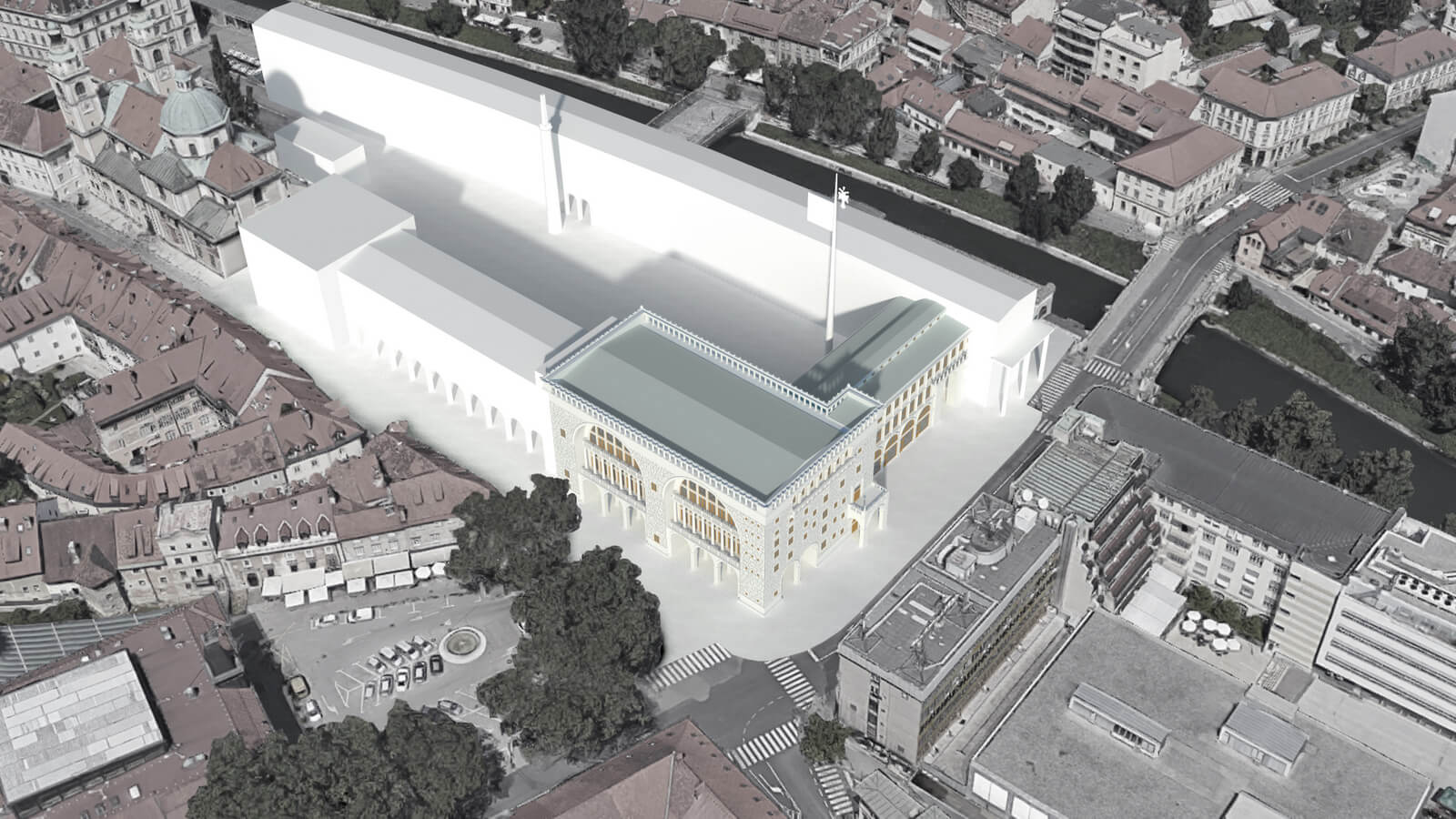
New Town Hall: Nejc Bernik, ZRC-SAZU
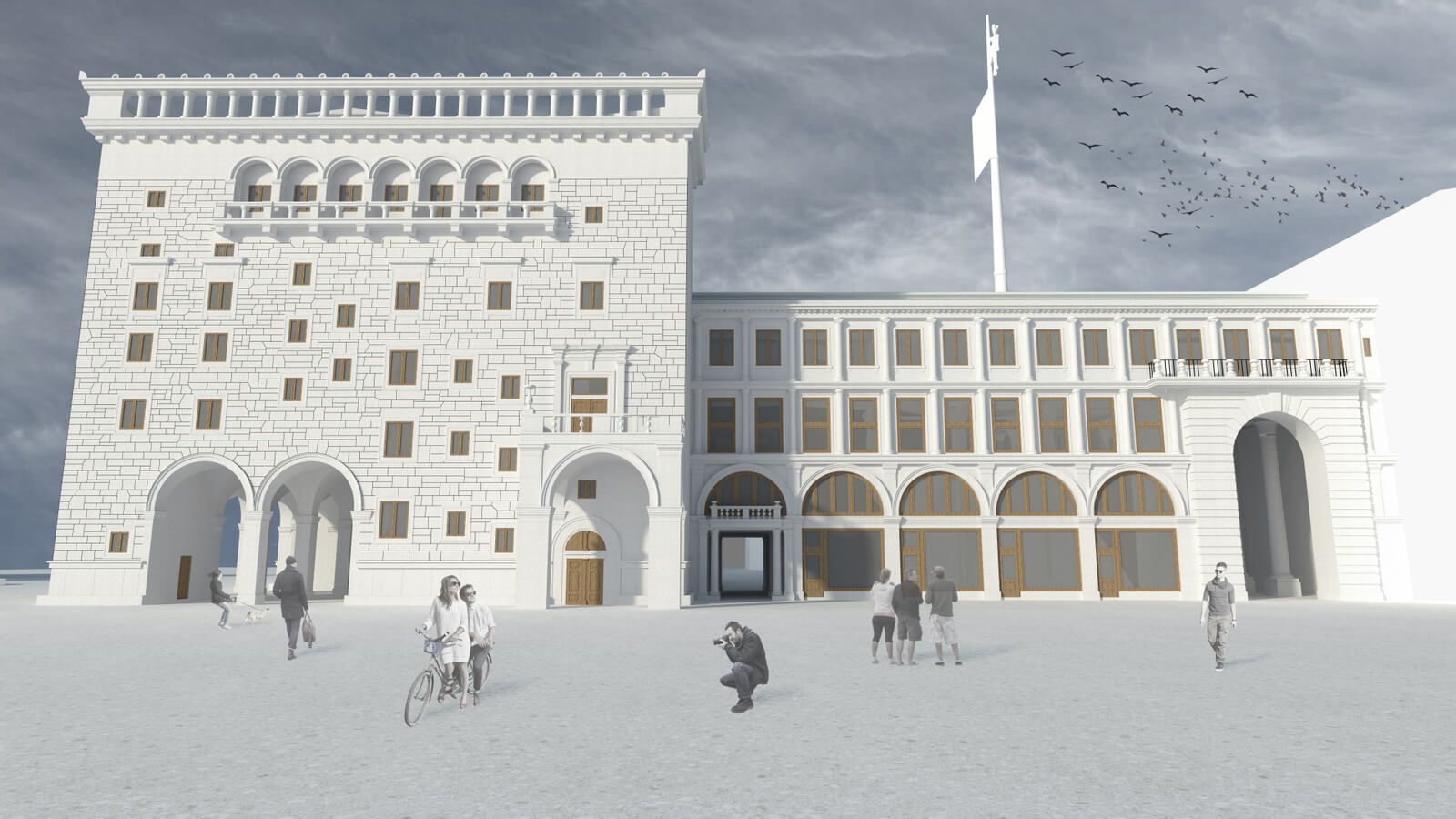
New Town Hall: Nejc Bernik, ZRC-SAZU
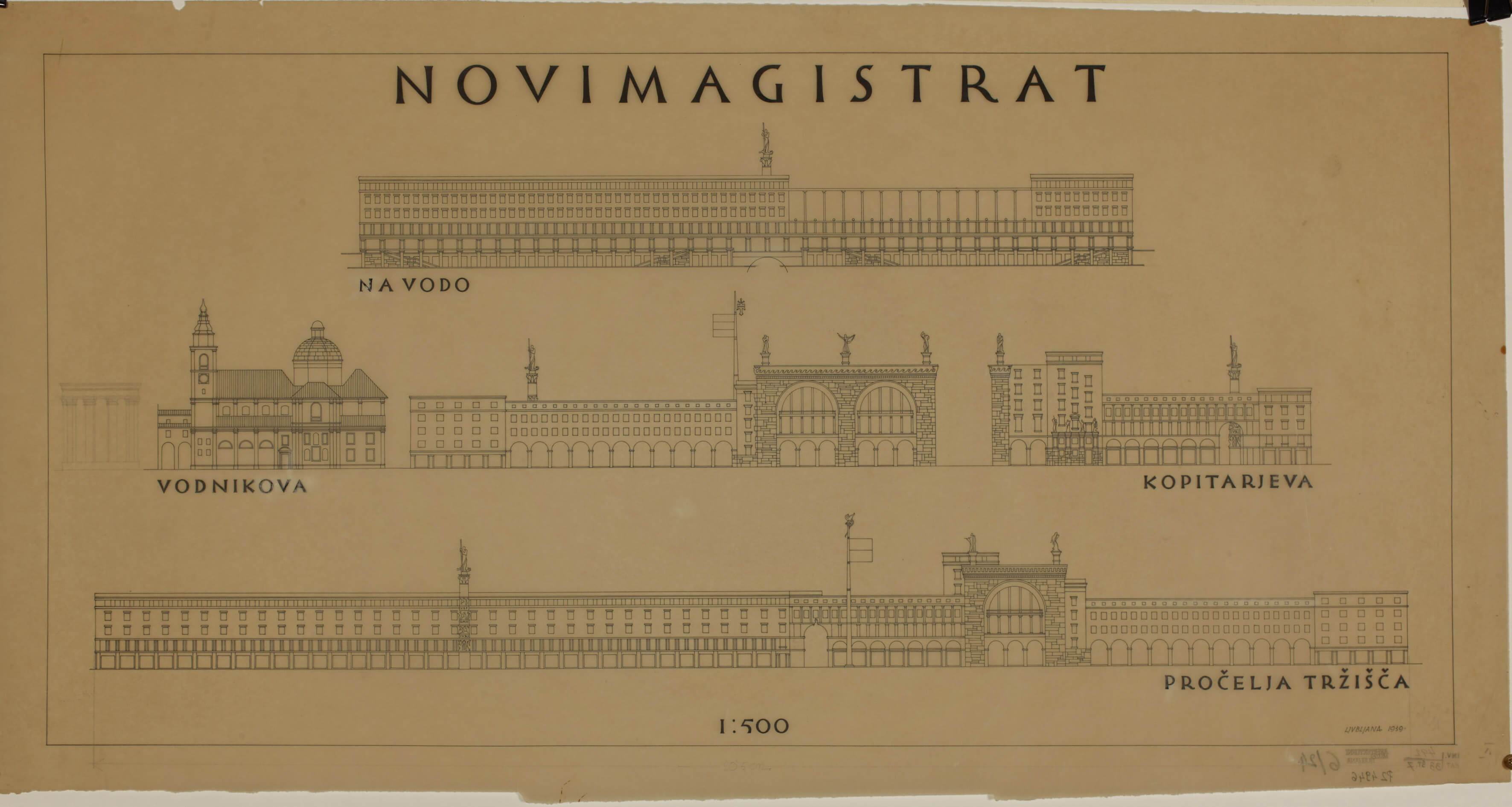
Plan for New Town Hall. Source: MGML
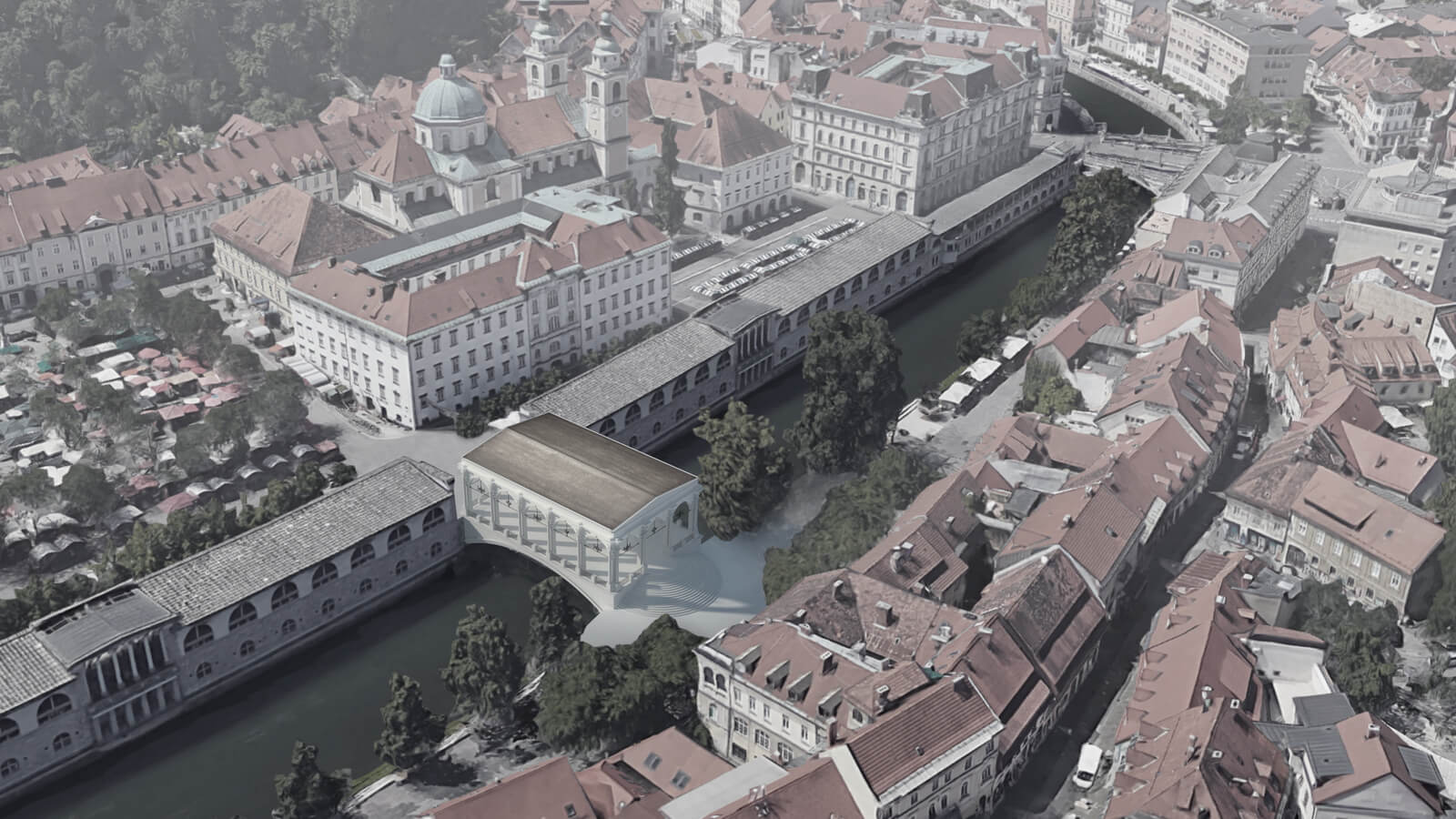
Butcher's Bridge: Nejc Bernik, ZRC-SAZU
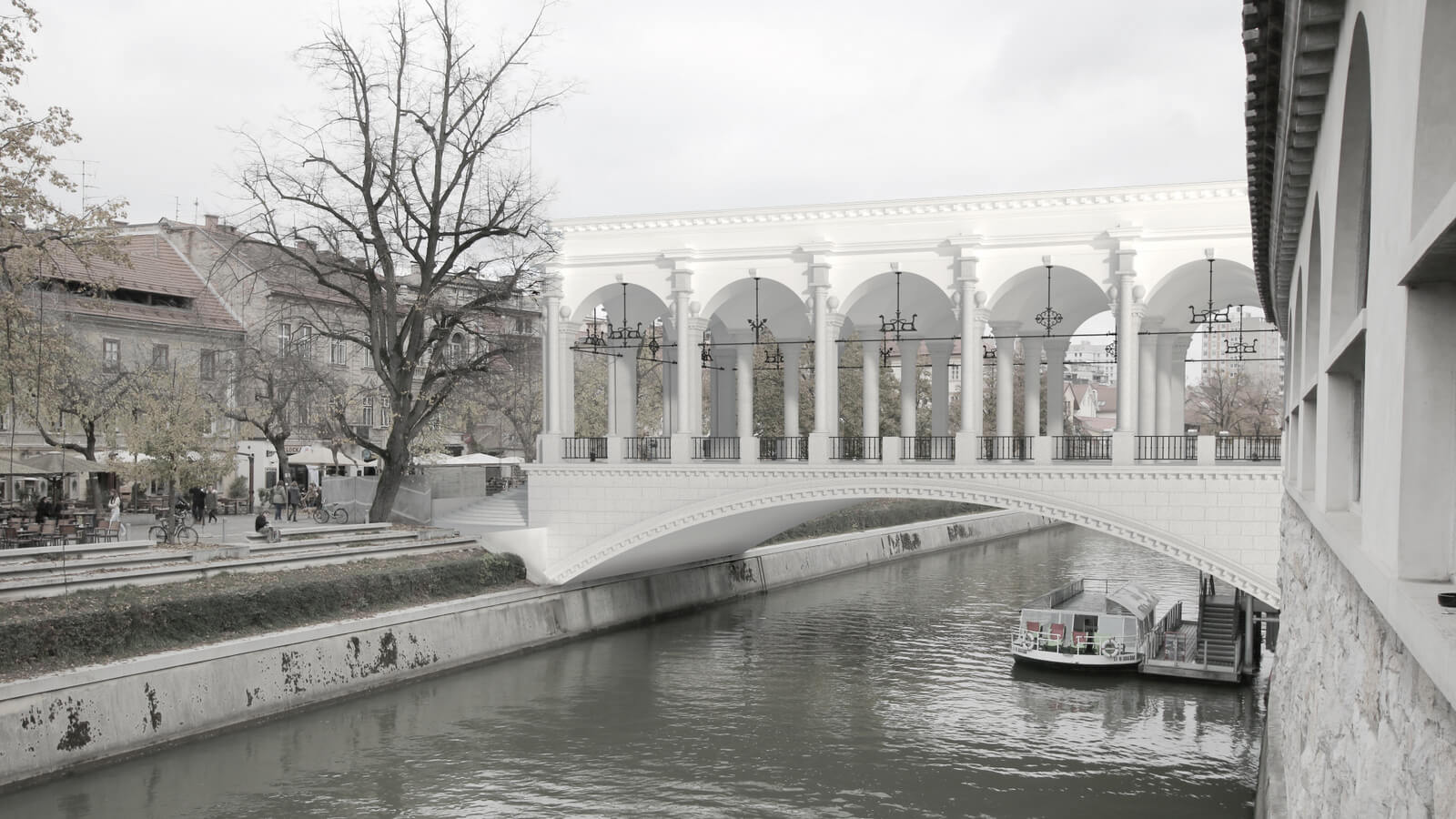
Butcher's Bridge: Nejc Bernik, ZRC-SAZU
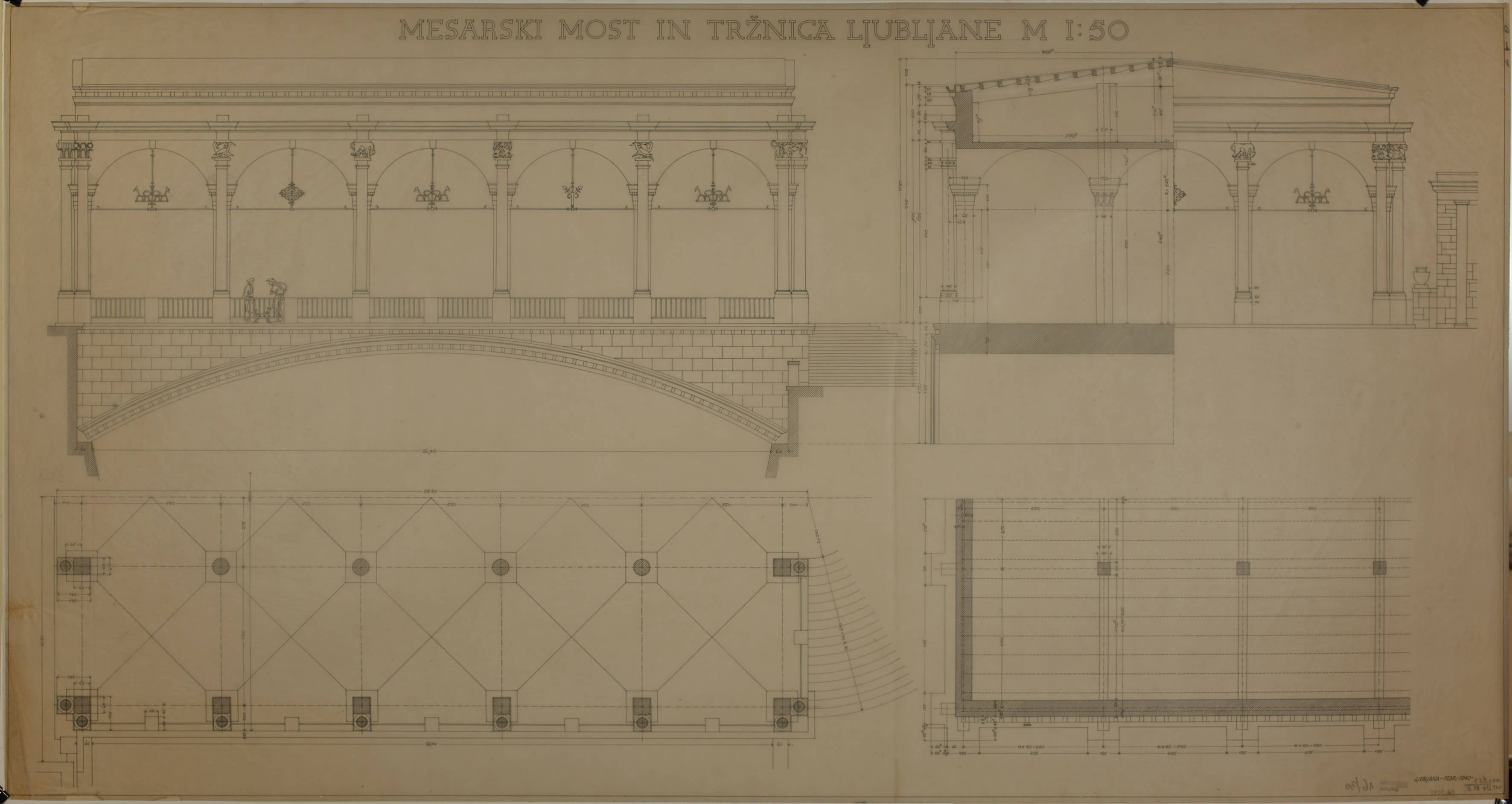
Plan for Butcher's Bridge. Source. MGLM
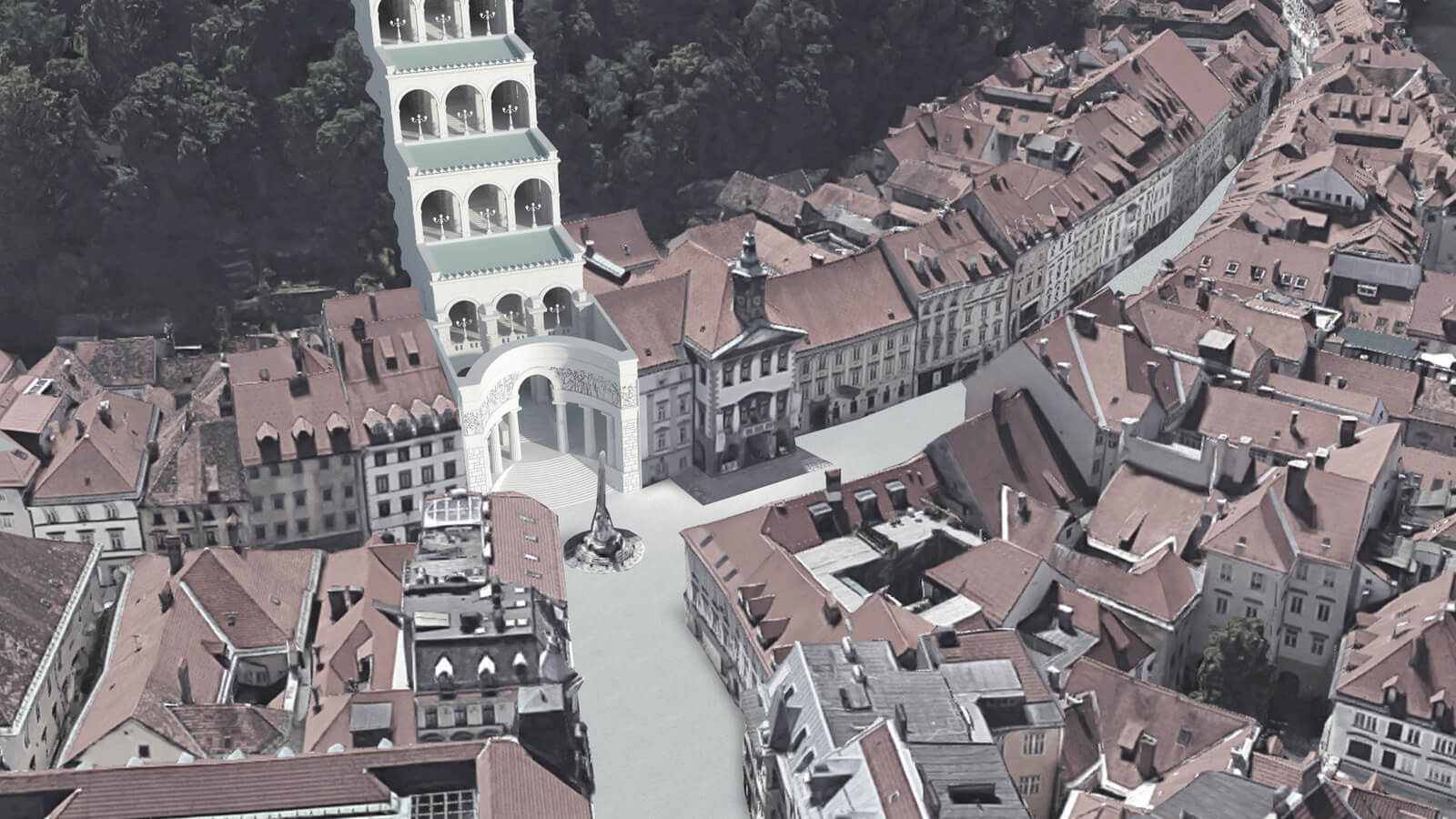
An addition to Ljubljana Castle. Nejc Bernik, ZRC-SAZU
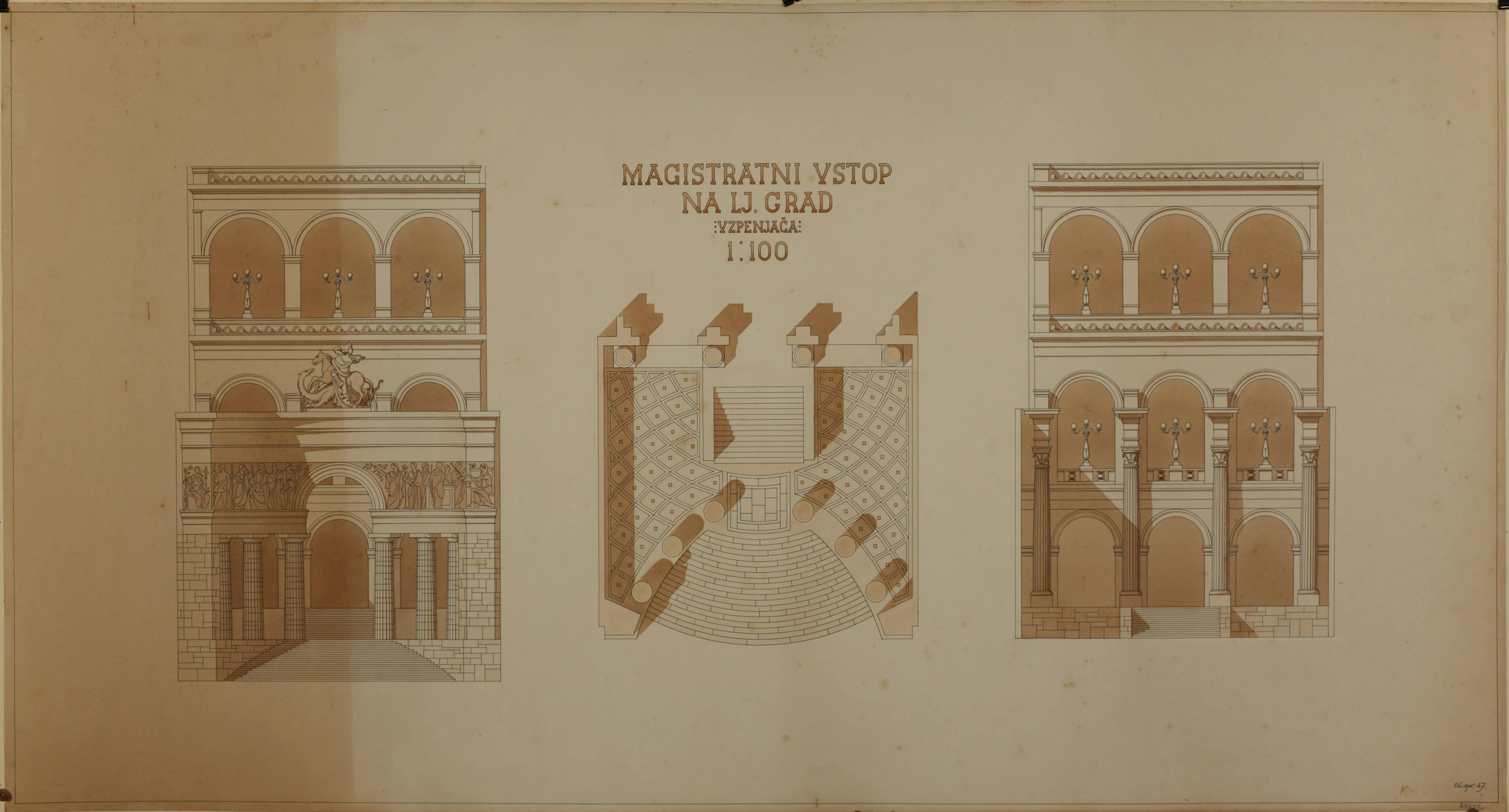
Plan for an addition to Ljubljana Castle. Source: MGML
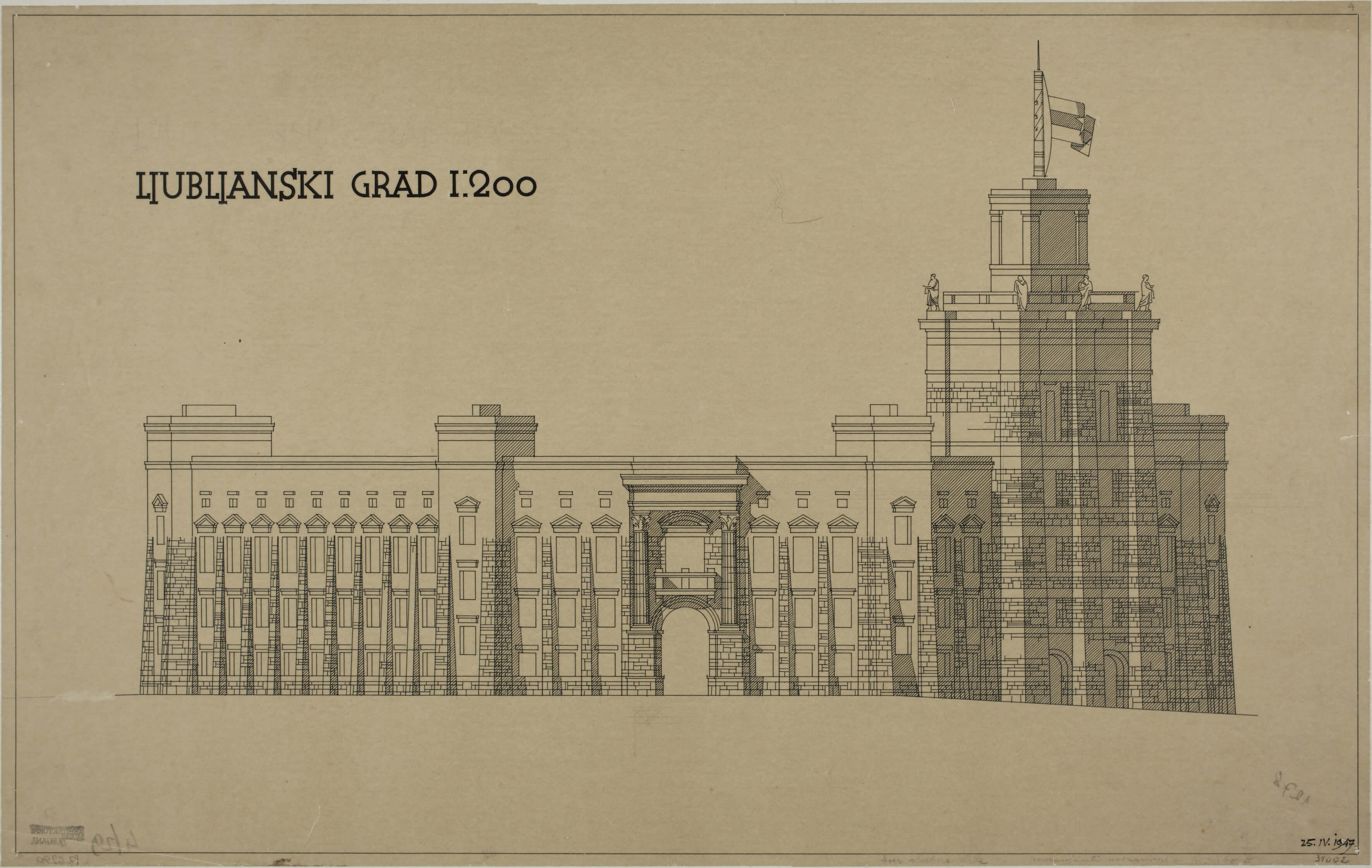
Plan for an addition to Ljubljana Castle. Source: MGML
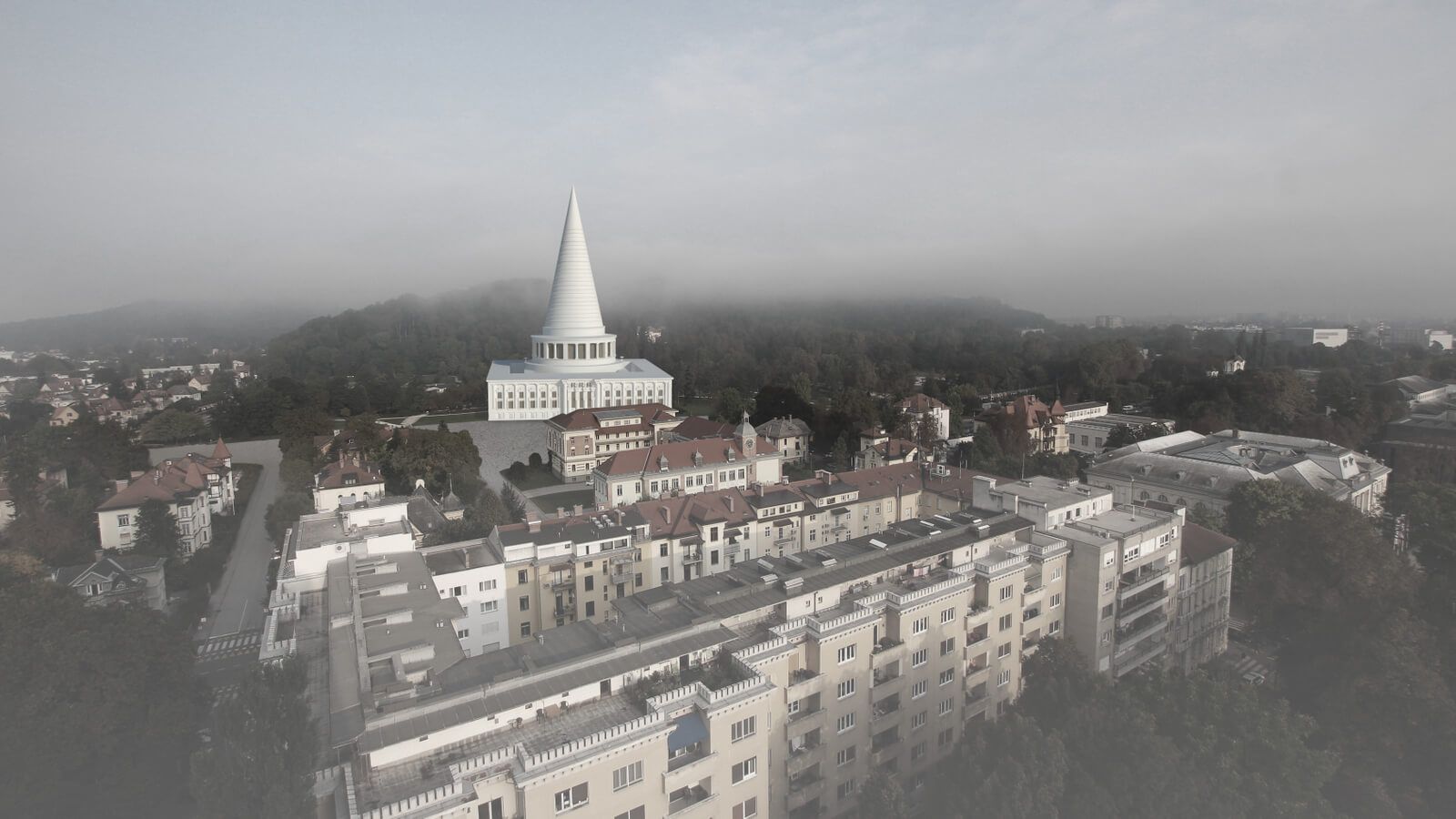
The Cathedral of Freedom, Tivoli Park. Source: Nejc Barnik, ZRC-SAZU
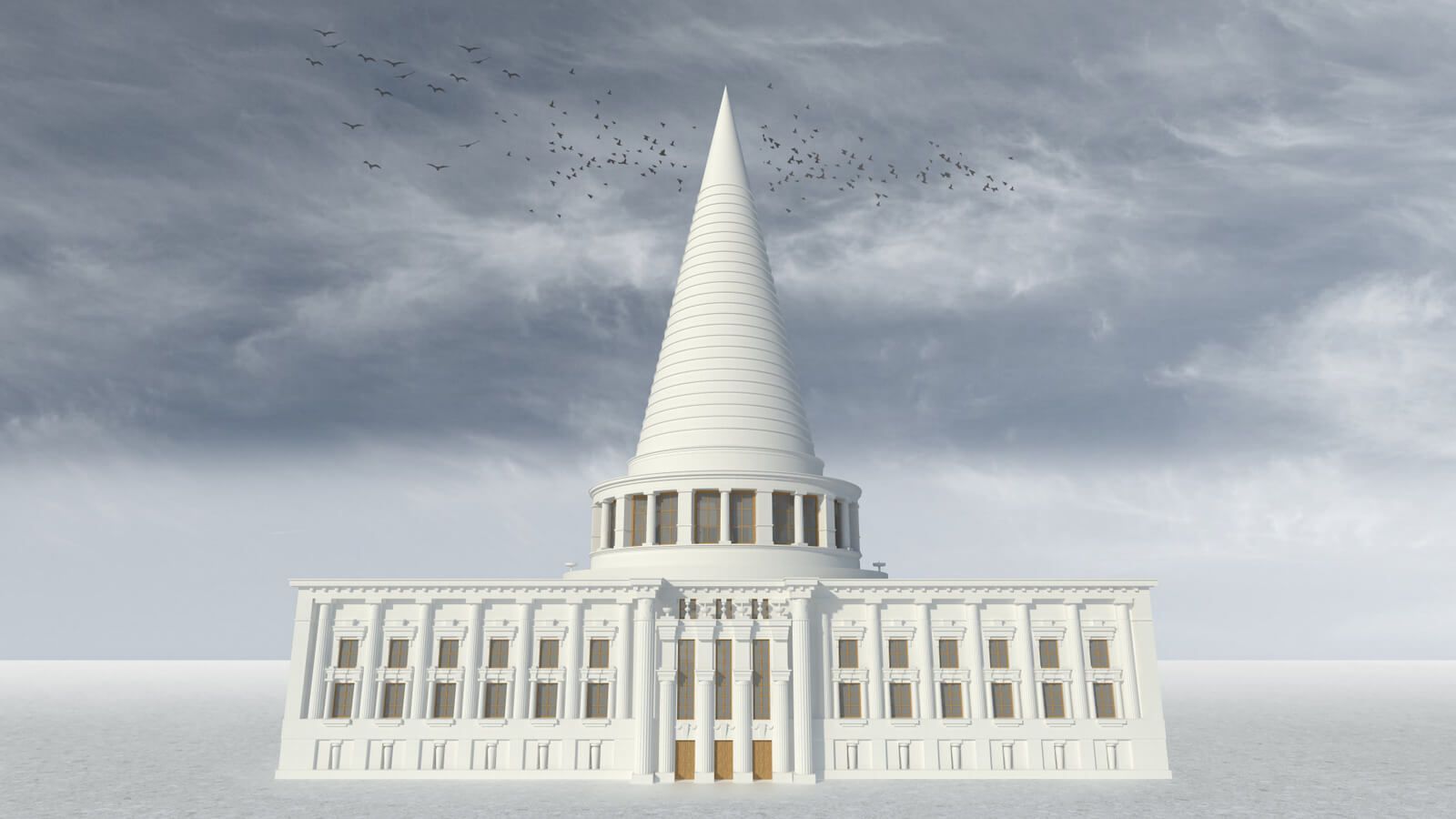
The Cathedral of Freedom, Tivoli Park. Source: Nejc Barnik, ZRC-SAZU
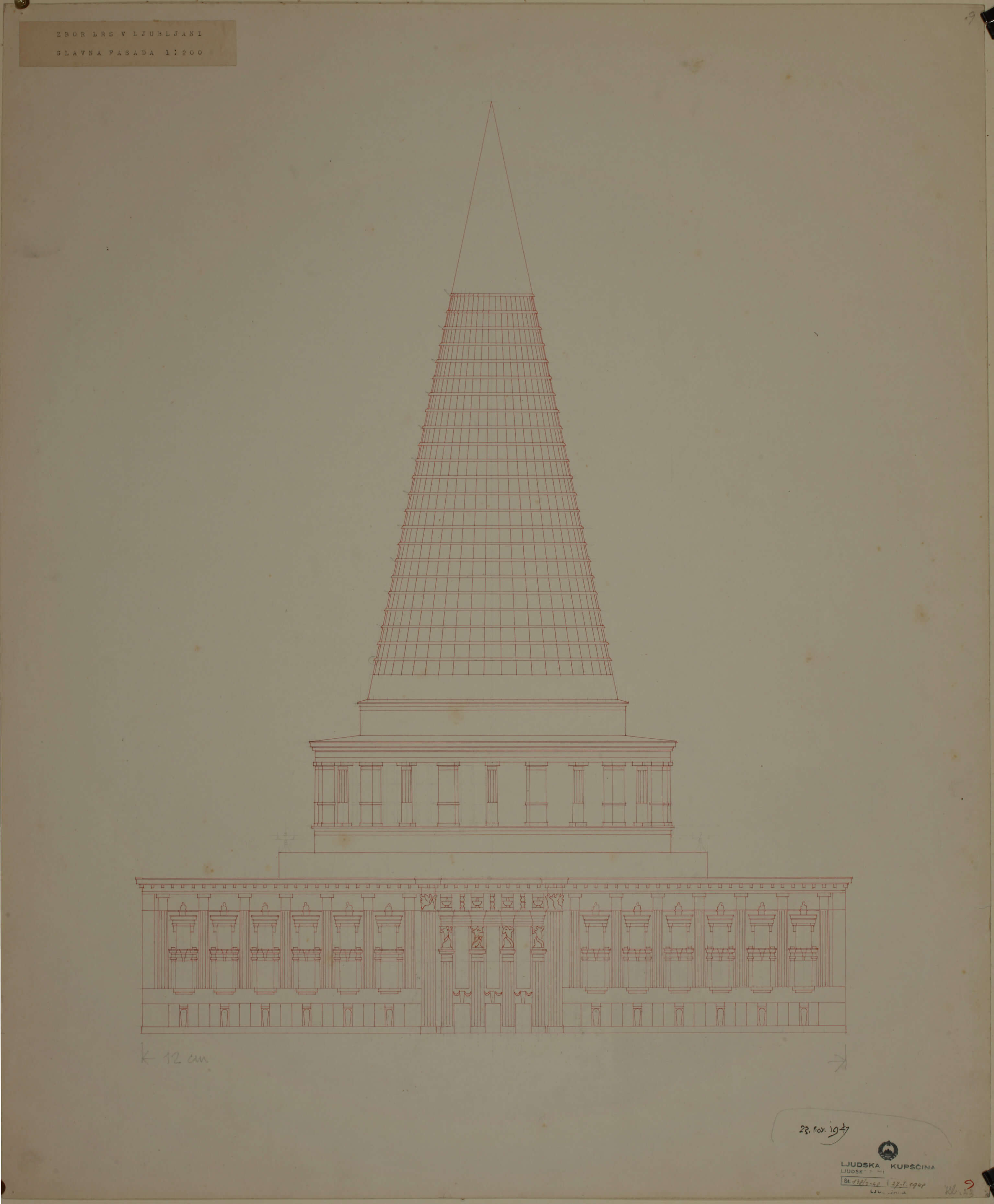
Plan for the Cathedral of Freedom. Source: MGML. If you have a 10-cent coin you might be able to see this on one side - one of Slovenia's contributions to the visual image of the euro...
The exhibition is free to enter with a ticket to the Plečnik House, which also includes a very informative guided tour of the building, as written up here. Tickets are €6 for adults, €4 for the over 60s, students, and children. The place is open Tuesday to Sunday, 10:00 to 18:00, and closed on Monday. More details here.
STA, 27 June 2019 - An exhibition on famous Slovenian architect and designer Jože Plečnik (1872-1957) and his designs of sacred objects opened in the Vatican Museums on Thursday evening, featuring 33 selected liturgical vessels as well as video presentations of his sacred architectural works.
Related: Playful and Austere - A Visit to Plečnik's House in Ljubljana
The opening was attended and addressed by Prime Minister Marjan Šarec and Culture Minister Zoran Poznič.
Šarec said at a reception for Slovenian Statehood Day, which followed the opening of the exhibition, that Slovenia should be proud and happy as this was the first Slovenian exhibition in the Vatican.
"Jože Plečnik is the greatest son of Slovenian architecture. He was a deeply religious man, which is perhaps less known, and it is not a coincidence that he created objects which we admire today."
Minister Poznič said that it was one of the largest events in culture this year. "The exhibition tells us how our artist, master Plečnik, associated the spiritual and material works in his work," he was quoted by the Culture Ministry.
Labelling Plečnik as one of the greatest men in Slovenian cultural history, the minister said that the "exhibition is an exceptional opportunity, serving as a booster of what sometimes we as a society lack - self-confidence."
Barbara Jatta, the director of the Vatican Museums, is happy that Pinacoteca Vaticana is hosting an "important exhibition of sacral objects by Jože Plečnik, a great architect and designer of the 20th century".
"Plečnik created an original and innovative style, which shows both in his church architecture and in the field of liturgical vessels," Jatta was quoted by the Ljubljana Museum and Galleries (MGML).
According to Peter Krečič, an expert on Plečnik's life and work who arranged the exhibition in cooperation with the Plečnik House curator Ana Porok, Europe and the world truly discovered the greatness of the architect's opus after his work was presented at the Paris Pompidou Centre in 1986.
Primarily famous for being an architect and urbanist, he was also a great designer, with his work being mostly showcased in three European capitals - Vienna, Prague and Ljubljana.
He established himself at the beginning of the 20th century by designing the famous Zacherl Palace in Vienna, then moved on to renovating the Prague Castle and its vicinity, transforming them into the symbol and political centre of a modern democratic state.
Plečnik also turned his hometown Ljubljana into a modern capital, having designed iconic buildings and spaces there.
Encouraged by his brother, who was a priest, he started designing liturgical vessels in 1913, including chalices, ciboria and monstrances, thus revolutionising traditional concepts of such design by introducing modern, clear lines and simple decoration featuring gemstones.
Designing the vessels, Plečnik drew inspiration from the art of sculpture, which makes those designs stand out and provides that transcendent aesthetic value which is essential to experience the sacred, according to Krečič.
The exhibition, entitled Plečnik and the Sacred, has been put on by the MGML in cooperation with the Slovenian Embassy to the Holy See, the Culture Ministry, the Ljubljana Archdiocese and Vatican Museums.
According to the MGML, Plečnik is the first Slovenian artist whose work will be showcased at the Vatican Museums. The exhibition will run until 7 September.
On Wednesday, Pope Francis received sculptor and painter Miko Simčič, the author of a one-tonne bust of the pope, made of Carrara marble, and standing on a pedestal made of two-colour Hotavlje marble.
Simčič said he had made the bust with the pope's approval, which he sees as a great honour, as Pope Francis had so far been rejecting the idea. The bust will be housed in the Vatican, and the artist wants to make more of them and give them to various cathedrals around the world.
You can learn more about the exhibition here





